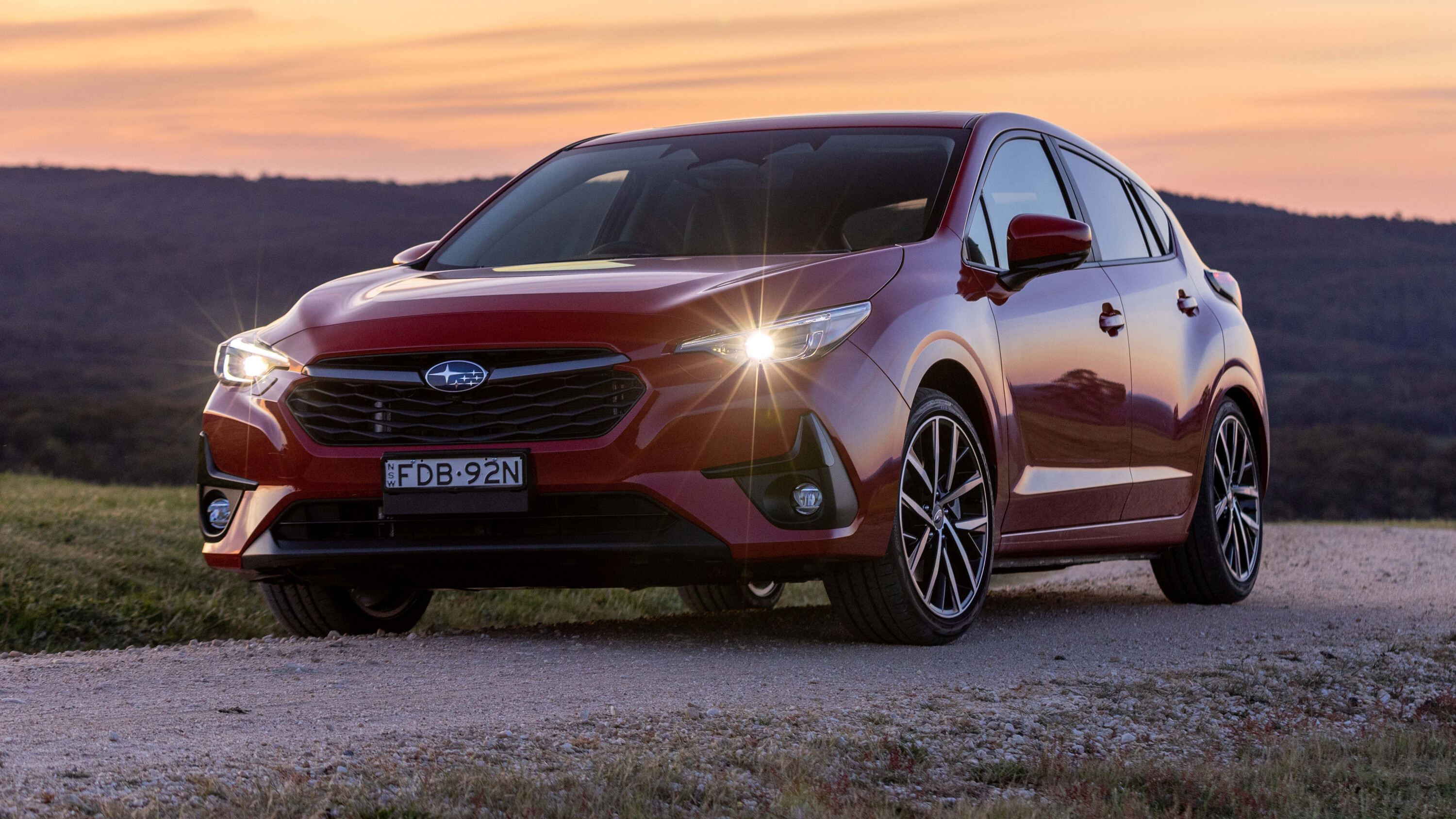Score breakdown
Things we like
- Generous back seat
- Security of all-wheel drive
- Responsive touchscreen with wireless connectivity
Not so much
- Soft and lumpy ride quality
- Lethargic flat-four
- Overactive safety aids
With the proliferation of SUVs and electric cars, you’d think car manufacturers might’ve given up on small combustion-engined cars.
Yet Volkswagen is launching a heavily revised Mark 8.5 Golf this year and Honda’s excellent new Civic has been lauded for its chassis poise and grown-up cabin.
Subaru hasn’t been quite as ambitious in developing the 2024 Impreza. This sixth-gen hatch shares an engine and the Subaru Global Platform with its predecessor – though it’s 10 per cent stiffer thanks to more structural adhesive. There’s no more sedan, even in the United States, so an Impreza hatch is your only choice.
The Japanese-built Impreza is a more handsome car than before, sporting new bumpers with a broad front intake and neat lower valance.
Subaru has tidied up the side profile with a single confident swage line encapsulating the glass, while at the back, smaller LED tail lights and a more pronounced roof spoiler lend it a sportier look. Evolution, not revolution, then.
JUMP AHEAD
- How much is it, and what do you get?
- How do rivals compare on value?
- Interior comfort, space, and storage
- What is it like to drive?
- How much fuel does it use?
- How safe is it?
- Warranty and running costs
- VERDICT
- Specifications
How much is it, and what do you get?
Prices are up by $4200 at the low end (that’s 15 per cent) and $5200 for the range-topping 2.0S, meaning the Impreza range spans $32,490-$37,990 before on-road costs.
To justify the price increase, Subaru has focused on enhancing technology and crafting more premium cabin vibes, with lashings of soft-touch materials and supportive seats.
We’re driving the mid-spec $34,990 (before on-road costs) 2.0R which replaces the Premium. While it misses out on the leather upholstery, premium Harman Kardon sound system, sunroof, and built-in navigation of the range-topping 2.0S (pictured), the R is equipped with about everything else you could reasonably want, making it the range’s sweet spot.
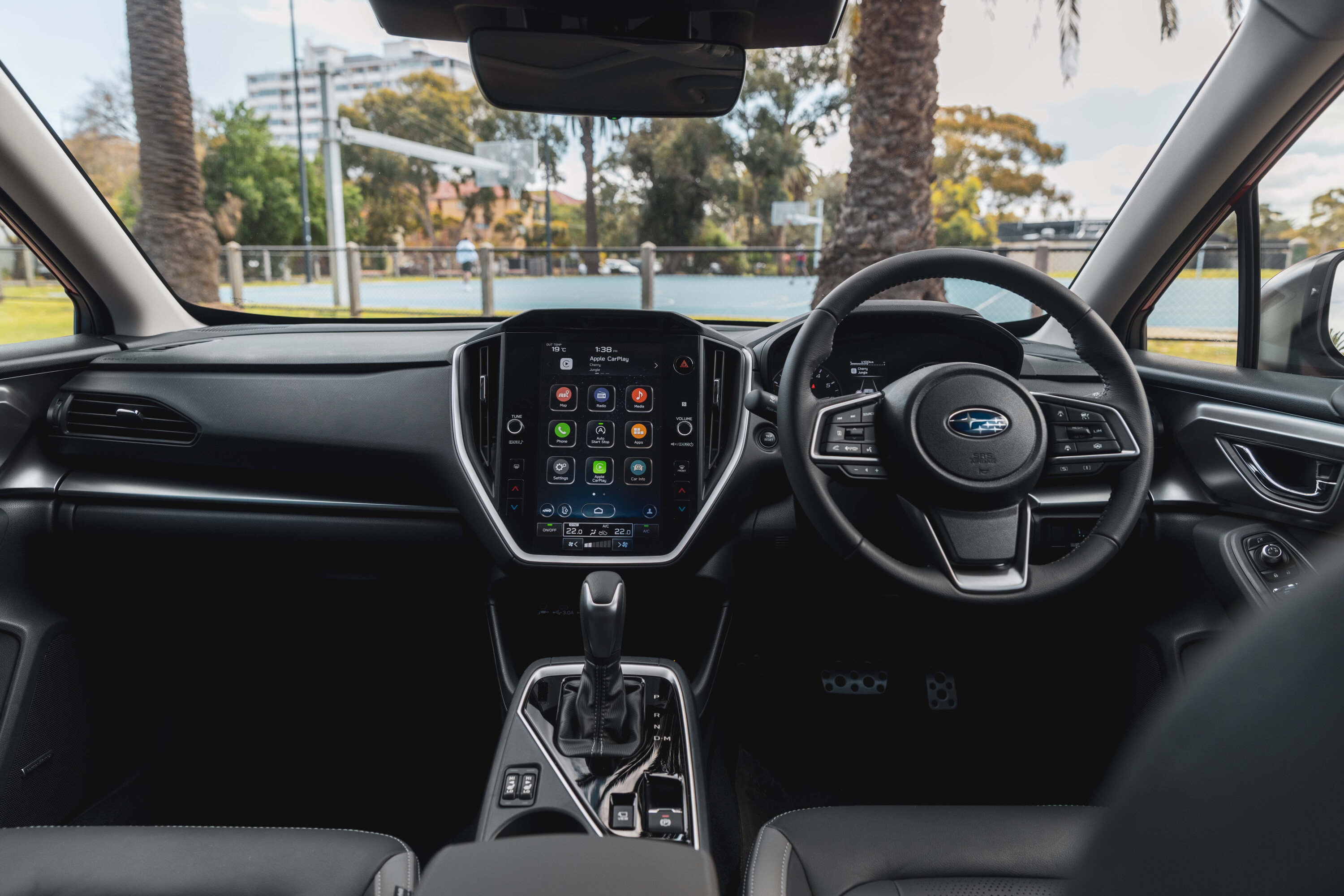
That equipment includes full LED lighting with auto high-beam, dual-zone climate control, tyre pressure monitoring, driver recognition, and keyless entry (front doors only), as well as a leather-appointed steering wheel and gear selector.
Cloth-appointed front seats are heated and the driver gets eight-way power adjustment. There’s even a nifty camera system that displays a top-down view or close-up angle of the front near-side wheel so you don’t kerb the machine-faced 18-inch alloys.

How do rivals compare on value?
Each grade is a little dearer than an equivalent Toyota Corolla or Hyundai i30, though Subaru would argue that the Impreza’s class-exclusive (at this price) AWD system gives it an edge. We’d agree.
A Mazda 3 G25 Evolve SP (at $35,670 before on-road costs) is perhaps the 2.0R’s most deadly rival, with a punchier engine and suave cabin presentation.
There’s even another Subaru to consider, the Crosstrek 2.0R ($38,490 before on-road costs), that ups off-road capability at the expense of boot space.
Interior comfort, space and storage
Subaru’s typically sturdy build is present and correct, with materials that balance a soft touch with the sense they’ll provide long-term durability.
The cabin’s crowning glory is an 11.6-inch portrait touchscreen that’ll be familiar to Outback owners. It’s backed by Subaru’s latest Starlink operating system with large touch targets and smooth operation.
Wireless Apple CarPlay and Android Auto are allied with a strong six-speaker sound system. There are myriad ways to keep devices charged, including an inductive charging pad, a 12-volt socket, and both USB-A and USB-C ports (2x each) accessible to front and rear passengers.
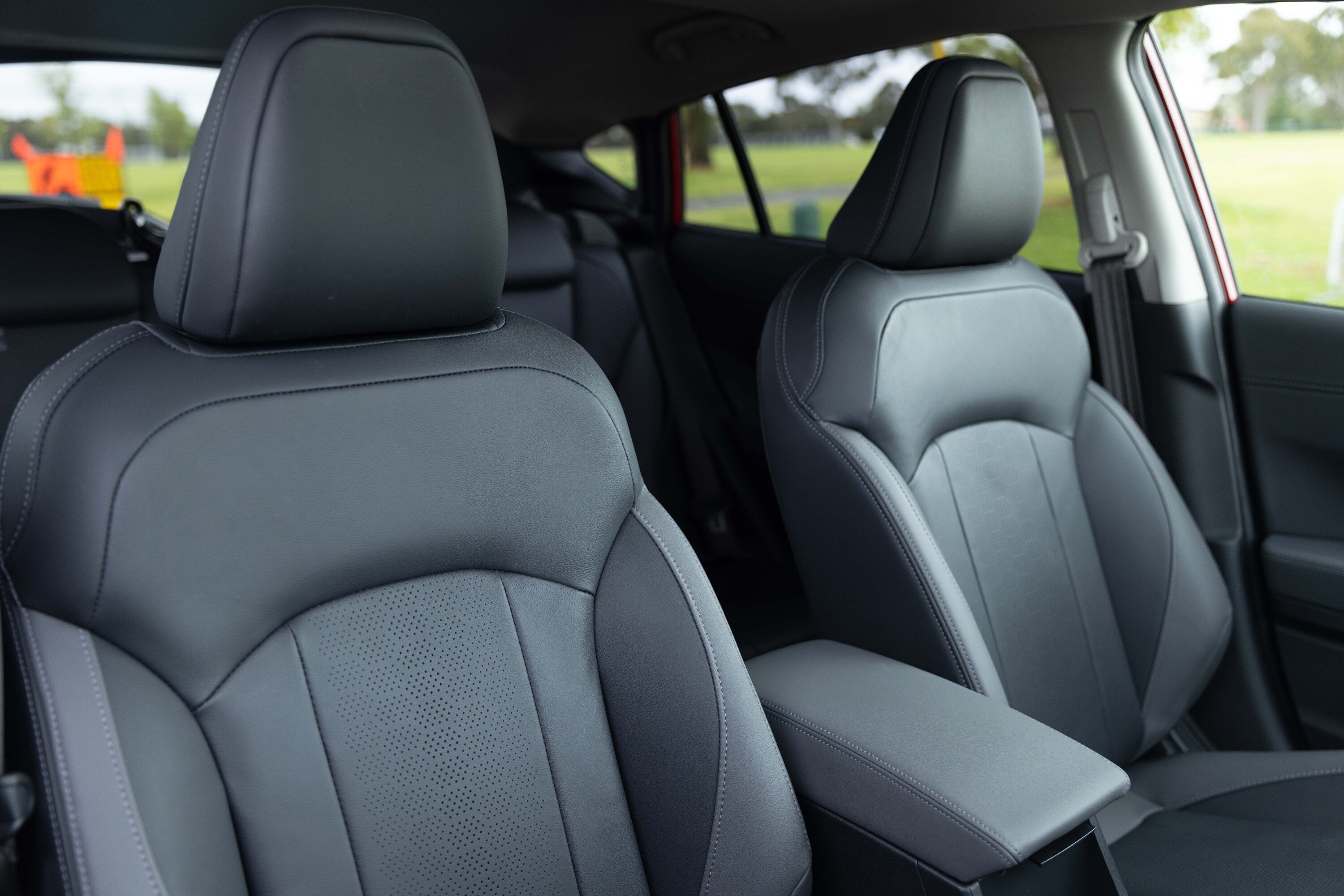
Two cup holders, generous door bins, and a deep central bin for stowage are found within and, despite not having grown its wheelbase, the new Impreza’s 15mm length and 5mm width boosts have improved second-row space.
It remains one of the most spacious cars in its segment, ahead of the Mazda 3 and Toyota Corolla for head and leg room, as well as width for three at a pinch. A supportive fold-down armrest caps off the rear quarters.
Unfortunately, the boot is no better than before. Still having to package double wishbone rear suspension, rear differential, and full-size spare beneath the boot floor means only 291L of VDA capacity. The floor is quite high, and while there are wet storage zones on each side, a Hyundai i30 offers greater space.
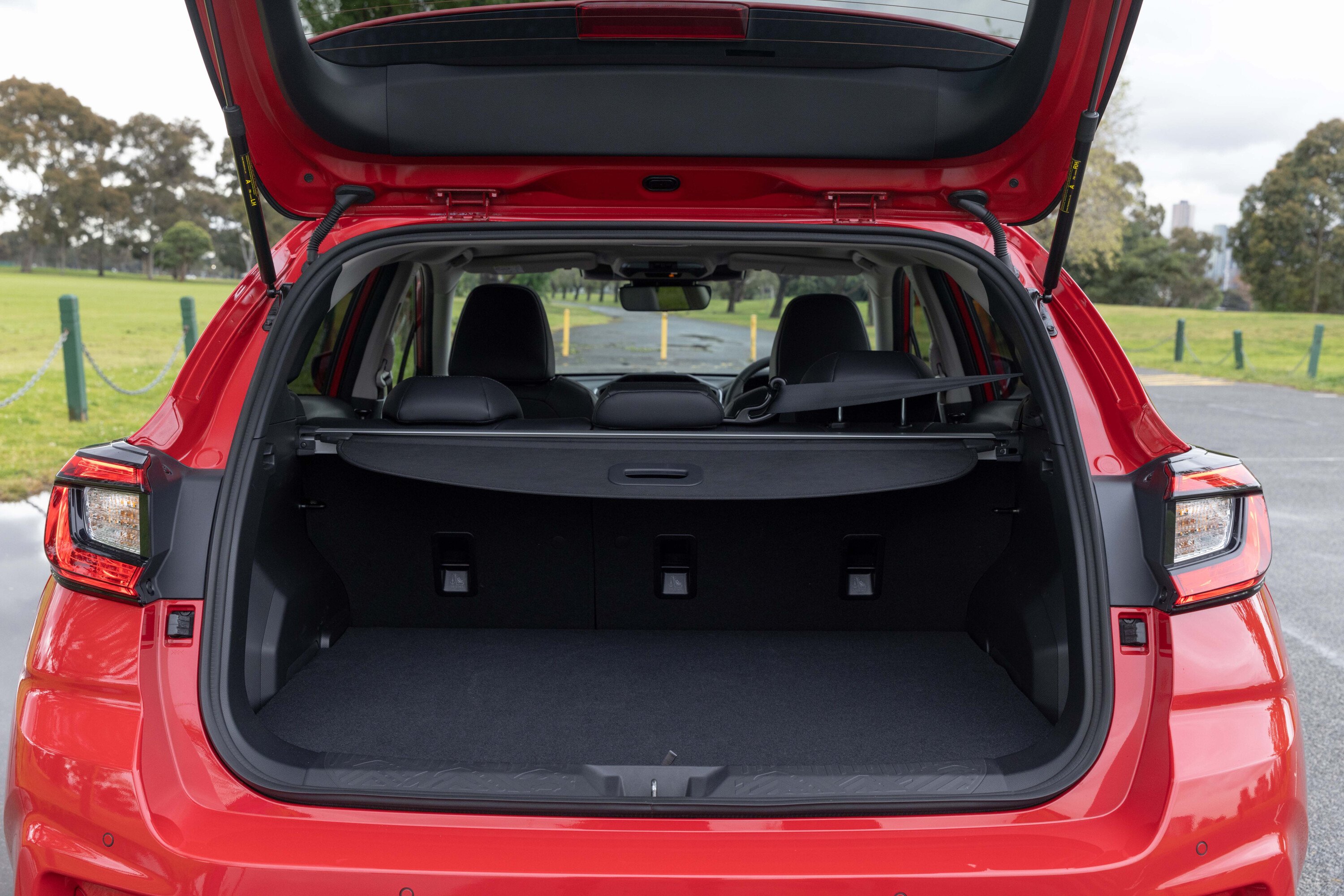
What is it like to drive?
Australian Imprezas are all fitted with Subaru’s 2.0-litre flat-four ‘boxer’ engine producing 115kW at 6000rpm and 196Nm at 4000rpm.
There’s little excitement from the four-banger and standard automatic continuously variable transmission (CVT). Although ‘S’ mode (accessible using steering wheel buttons) brings a sportier throttle response and holds higher engine speeds than the default ‘I’ setting, it barely improves the Impreza’s unhurried acceleration.
During testing the Impreza was able to reach 100km/h from rest in 10.8 seconds, which is a fair way off a front-drive Toyota Corolla petrol hatch (we timed one at 9.6 seconds in 2019) and that tardiness is noticeable when accelerating away from junctions and joining motorways.

That said, this hatch isn’t about stirring your soul or rapid launches. The engine, although requiring revs to keep pace up hills, is mostly hushed – as is wind noise.
Although the sporty 225/40 18-inch Yokohama Advan V105 tyres can be vocal on coarse-chip country roads, they do quieten down on smoother asphalt. Those 18-inch alloys also tend to get hung up around town on expansion joints and sharp-edged bumps, despite the Impreza’s plush primary ride.
Equipped with sticky tyres and a symmetrical all-wheel drive system, the Impreza is gripped up through smooth bends. The sharp 2.6-turn lock-to-lock steering (with a version of the WRX’s dual-pinion rack) helps it feel athletic.
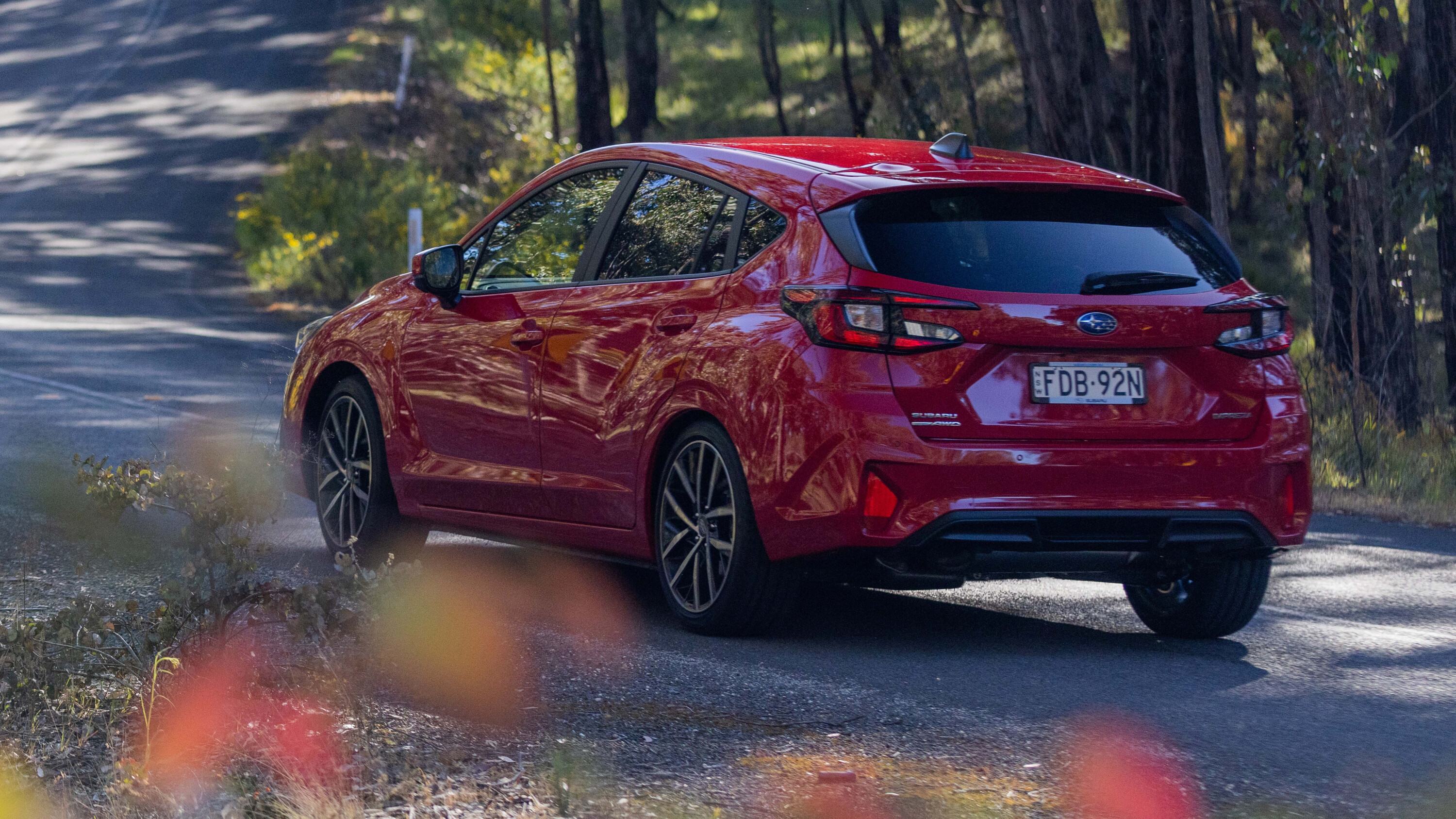
The Impreza’s soft springs are matched with even looser dampers, though, and lazy body control is the result.
So while there’s plenty of tyre grip on testing roads, mid-corner bumps leave the 2.0R flummoxed. It also fidgets constantly, finding bumps and lumps in the road where rivals such as a Golf or Civic iron out imperfections.
The Impreza has gained some weight, which could play a part in its softer edges, and although some of that has gone into a stiffer body shell the doors don’t shut with a satisfying clunk. The new 2.0R weighs 1435kg (tare), some 52kg more than the old Premium.
If any of the terms in this section have left you scratching your head, these articles will help bring you up to speed!
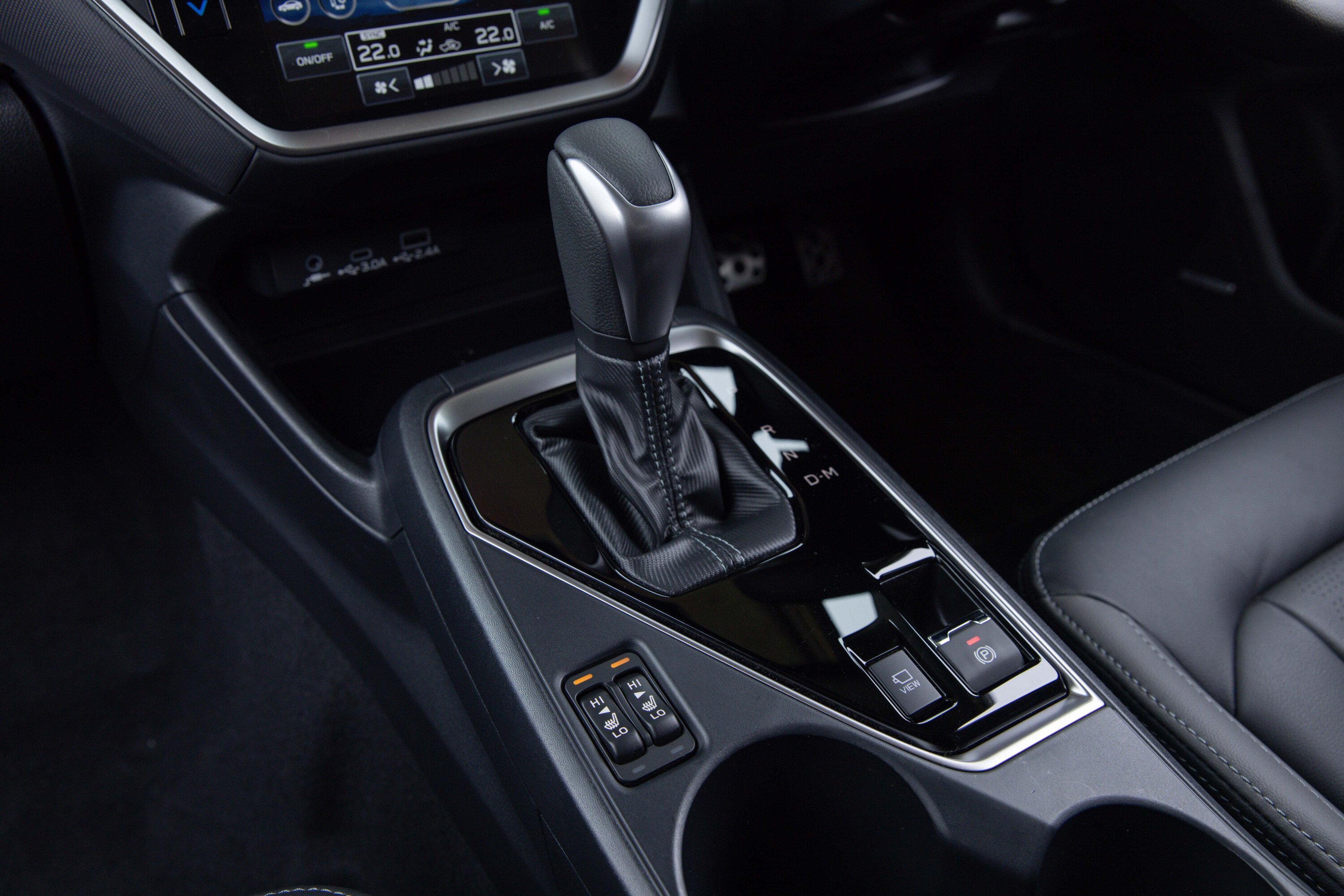
- What is a Powertrain or Drivetrain?
- Power vs torque
- Car suspension explained
- Automatic transmissions (‘gearboxes’) explained
- Chassis control systems explained
- Car vs Ute vs SUV: How the vehicle you buy should guide the way you drive
- What is the WLTP emissions and range test?
ANCAP is yet to rate this generation of Impreza, but it ships with a long list of safety features courtesy of Subaru’s latest camera-based EyeSight suite.
Front AEB, adaptive cruise control, rear cross-traffic alert, blind-spot monitoring, driver attention monitoring and nine airbags (two more than before) are all present.
Most are well integrated, save for the lane-keep assist which is overly sensitive and weights the steering up when it detects you drifting towards lane markings, making it difficult to adjust the Impreza’s trajectory smoothly.
The driver attention monitoring system can be helpful, recommending a coffee break after time spent behind the wheel.
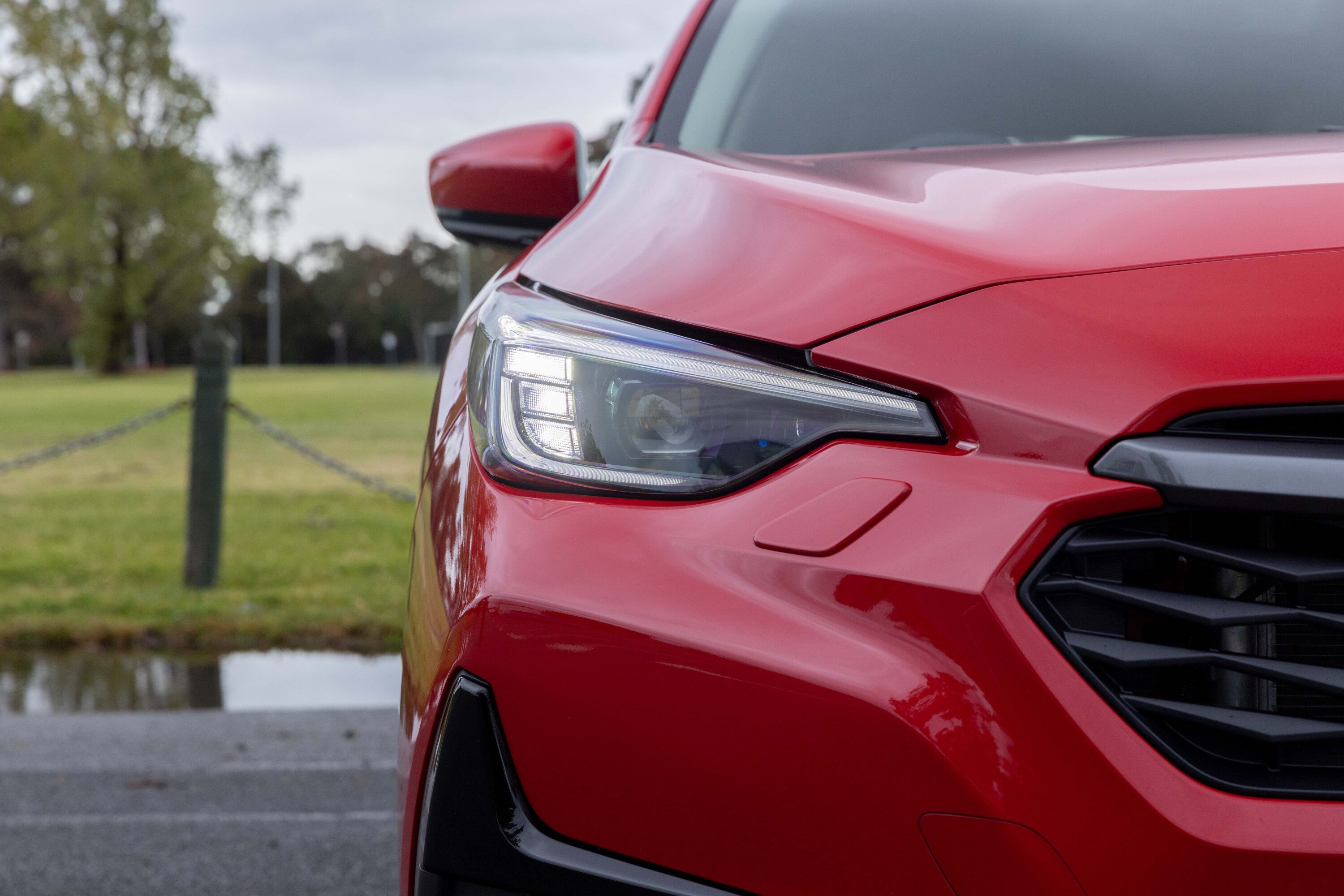
How much fuel does it use?
Subaru’s idle-stop system works quite well (and tells you exactly how many millilitres of fuel you’ve saved during a trip).
However, fuel economy isn’t the Impreza’s strong suit – it’s a long way off a Toyota Corolla or Hyundai i30. We saw 10L/100km in typical suburban driving, where front-drive rivals would be closer to 7.0L/100km.
On a 200km country run the Impreza’s fuel consumption improved, with the trip computer showing 8.2L/100km. By week’s end, the trip was showing 8.8L/100km.
It only requires 91 RON petrol, which will save some money at the bowser, and the 50L tank gives a decent cruising range.
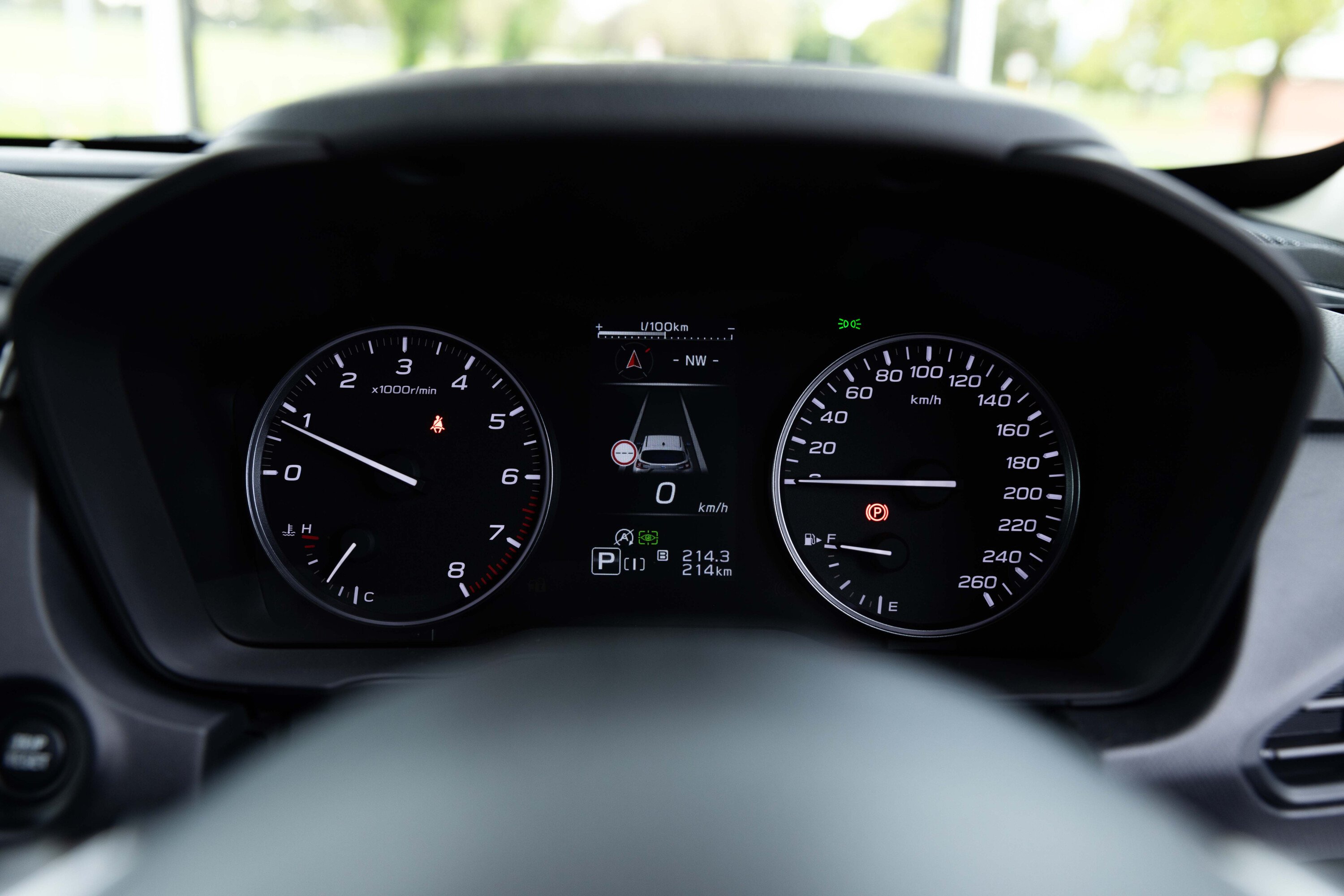
Warranty and running costs
Subaru covers the Impreza with a five-year, unlimited-kilometre warranty. Up there with everyone else save for Kia’s lengthy seven-year guarantee.
The Japanese brand stipulates service intervals of 12 months or 12,500km, costing you $2373 over five years. That averages out to $474.60 annually.
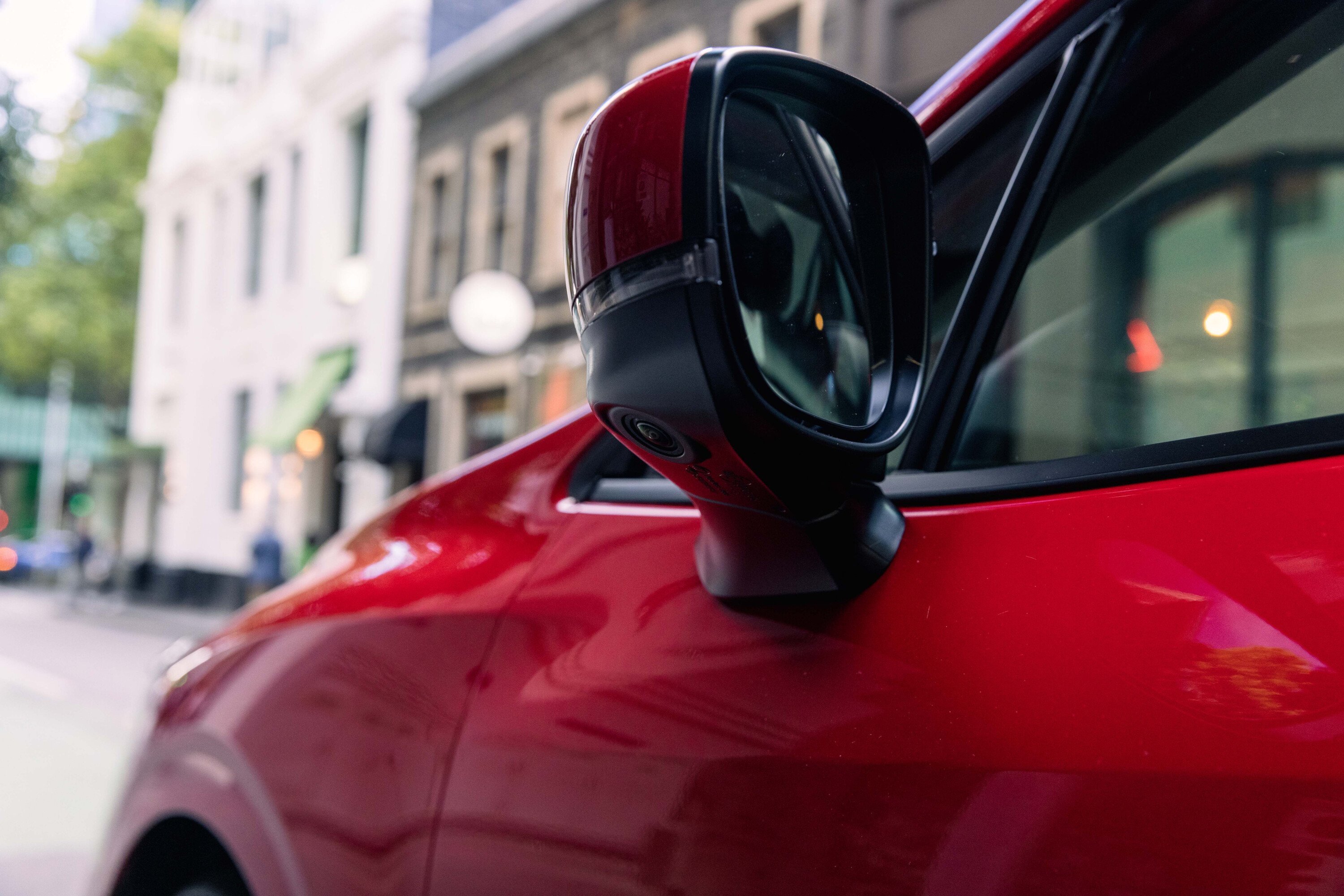
VERDICT
The latest generation of Impreza remains reassuringly competent. But there’s a bigger issue than competence: like all small cars, the Impreza is struggling against the popularity of SUVs.
For this hatch, that’s an even bigger problem – with no sedan, the popularity of the closely related Crosstrek, and the WRX performance variant being a break-out model of its own, the conservative Impreza’s unique selling point is more diluted than ever.
It’s telling that Subaru chose to quietly release this latest-gen Impreza (which feels more like a deep facelift in truth) without the fanfare of a media launch.
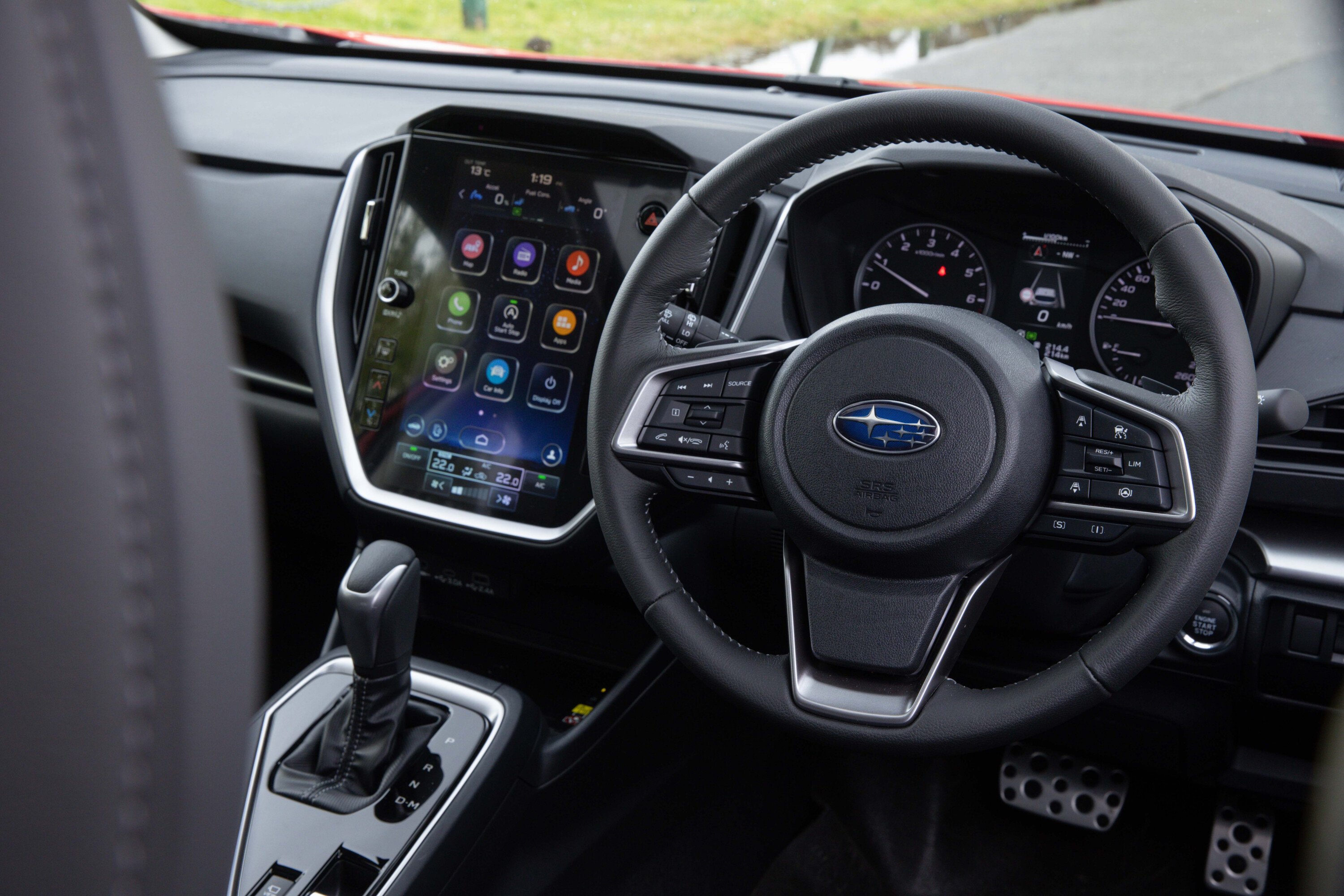
That said, Subaru has shown an interest in offering more choice down under; a richly equipped and efficient hybrid could resonate, while a sporty 2.5 RS model (as seen in the US) could nab the attention of i30 N Line buyers.
With a more presentable and connected cabin than ever before, the unique draw of all-wheel drive and Subaru’s proven track record of manufacturing fit-for-purpose cars, the Impreza is worth a look and test drive.
But we’d suggest taking a close look at rival hatches, or even other options in the Subaru showroom, before taking the plunge.
| 2024 Subaru Impreza 2.0R specifications | |
|---|---|
| Price (drive-away) | $34,990 before on-road costs |
| Drivetrain | |
| Engine | 4cyl, horizontally opposed, 2.0-litre, direct-injected |
| Compression ratio | 12.5:1 |
| Drive | Symmetrical all-wheel |
| Power | 115kW (@6000 rpm) |
| Torque | 196Nm (@4000 rpm) |
| Gearbox | CVT automatic |
| Chassis | |
| L/W/HB | 4490/1780/1480mm |
| Wheelbase | 2670mm |
| Track (F/R) | 1540/1545mm |
| Weight (tare) | 1435kg |
| Boot | 291/8832L |
| Fuel/tank | 91 RON/50L |
| Economy (combined ADR81/02) | 7.5L/100km |
| Suspension | Front: Struts | Rear: Double wishbone |
| Steering | Electric power-assisted steering, 2.6 turns lock-lock |
| Front brakes | Ventilated disc |
| Rear brakes | Ventilated disc |
| Tyres | Yokohama Advan Sport V105 |
| Tyre size | 205/40R18 |
| Safety | |
| ANCAP rating | Unrated |
| 0-100km/h | 10.8 seconds (tested) |
Score breakdown
Things we like
- Generous back seat
- Security of all-wheel drive
- Responsive touchscreen with wireless connectivity
Not so much
- Soft and lumpy ride quality
- Lethargic flat-four
- Overactive safety aids
We recommend
-
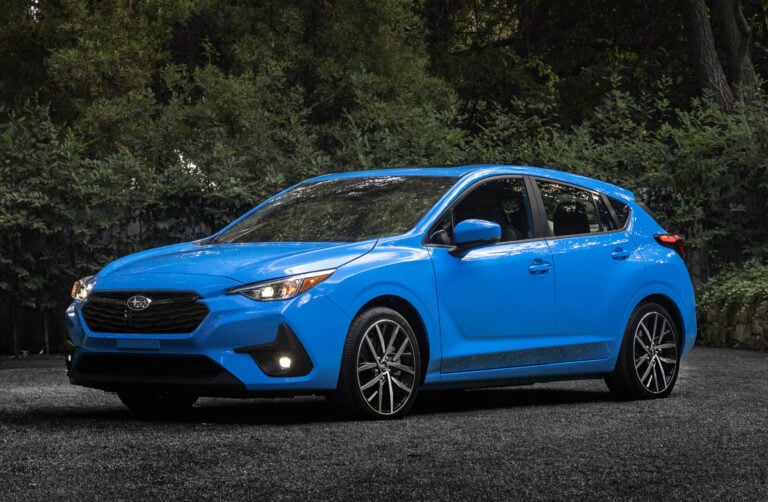 News
News2024 Subaru Impreza pricing and features: Base price up $4200
Sixth-gen Subaru Impreza detailed for Australia with an updated design and more tech than ever – but prices have increased by up to $5200
-
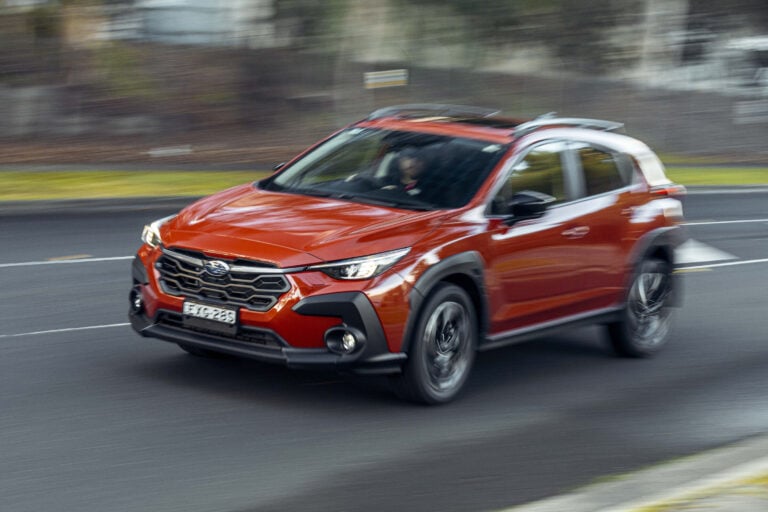 News
NewsSubaru Crosstrek and Impreza 2024: Bigger engine, sportier variants, hybrid on the cards
Subaru Australia expected to expand its variant offerings with larger-engined Crosstrek, sporty Impreza RS and a potential Impreza Hybrid on the cards for 2024
-
 News
NewsNew car calendar 2026: All the new cars coming to Australia next year
Here’s the WhichCar by Wheels guide to all the new cars that will launch in Australia in 2026. Check back in regularly for updates...


